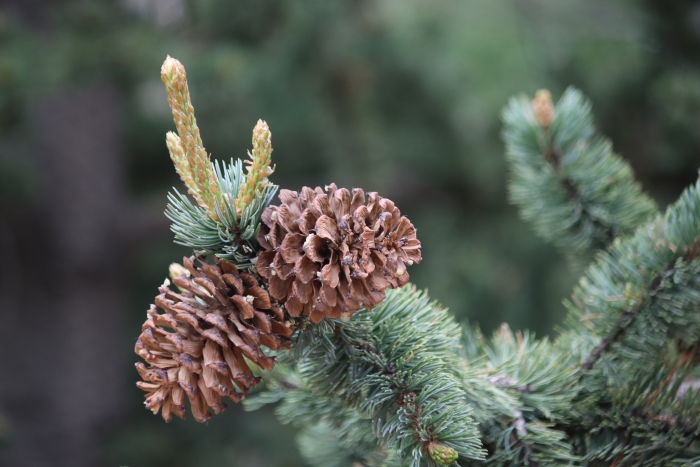Rocky Mountain Bristlecone Pine
(Pinus aristata)
Rocky Mountain Bristlecone Pine (Pinus aristata)
/
/

Cheryl McCleary-Catalano
CC BY 4.0








































































Estimated Native Range
Summary
Rocky Mountain Bristlecone Pine is valued for its unique, gnarled appearance and its ability to withstand challenging conditions, making it a popular choice for rock gardens and as a specimen tree in small gardens within cold climates. It is also appreciated for its slow growth, which allows it to fit into landscapes without the need for frequent pruning. In cultivation, it requires full sun, low water once established, and well-drained soils to prevent root decay, which is a common issue when grown outside its native, arid environment. It is less long-lived in cultivation than in the wild, with a lifespan typically less than 100 years due to more humid conditions that favor root diseases.CC BY-SA 4.0
Plant Description
- Plant Type: Tree
- Height: 20-30 feet
- Width: 10-15 feet
- Growth Rate: Slow
- Flower Color: N/A
- Flowering Season: Non-Flowering
- Leaf Retention: Evergreen
Growth Requirements
- Sun: Full Sun
- Water: Low
- Drainage: Fast
Common Uses
Bird Garden, Deer Resistant, Drought Tolerant, Edible*Disclaimer: Easyscape's listed plant edibility is for informational use. Always verify the safety and proper identification of any plant before consumption., Fragrant, Low Maintenance, Rabbit Resistant, Rock Garden
Natural Habitat
High mountains of the southern Rocky Mountains and the Intermountain West, particularly in Colorado, New Mexico, and Arizona
Other Names
Common Names: Colorado Bristlecone Pine , Hickory Pine , Interior Bristlecone Pine , Foxtail Pine , Grannen-Kiefer , Hickory-Kiefer , Grannenkiefer , Pin Aristé , Pino Aristato , Rävsvanstall , BĀSutorukŌN-Matsu
Scientific Names: Pinus aristata , Pinus balfouriana var. aristata , Pinus balfouriana subsp. aristata
GBIF Accepted Name: Pinus aristata Engelm.